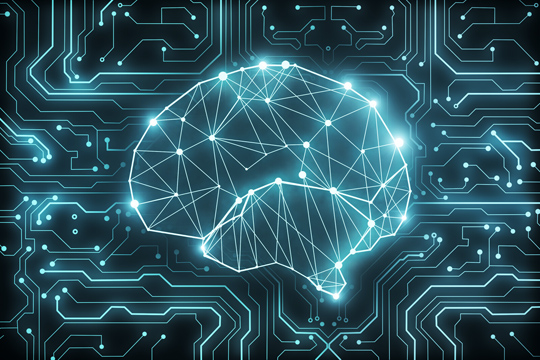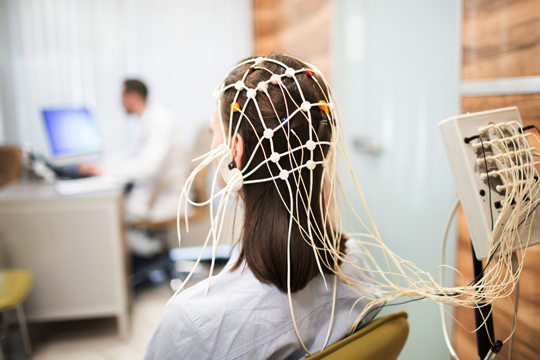Machine-optimizing machines
Freiburg, Aug 07, 2019
In many areas of work, whether it is weather forecasting, facial recognition or interpretation of brain data, people are almost completely dependent on the support of machines. Automated machine learning processes rapidly accelerate social change. Prof. Dr. Frank Hutter, computer scientist from Freiburg, is investigating how such methods work. And how they can be used by more than just large companies.

Artificial intelligence has long had a firm place in speculations about the future of mankind.
Photo: peshkov/Can Stock Photo
Whether in feature films such as "2001: A Space Odyssey" and "Matrix" or at scientific conferences, artificial intelligence (AI) has long had a firm place in speculations about the future of mankind because it encompasses areas such as robotics, computer vision and speech understanding. “Machines can carry out complex tasks. Experience helps the machine improve over time,” explains Prof. Dr. Frank Hutter, professor of machine learning at the Faculty of Engineering at the University of Freiburg. In machine learning (ML), a form of AI, a program independently finds correlations in data that it is fed. With financial support from the Bosch technology company, Hutter is currently leading the “Automated Machine Learning (AutoML)” project, a research area that he co-founded a few years ago.
Manual versus automatic
A machine can make predictions based on data. In traditional machine learning, experts have had to manually define so-called features, properties of the data that are important for a prediction. In image recognition, for example, these include colors, shapes, contours, etc. In the past, this was a manual process. With the help of such features, the machine can define a function that allows conclusions to be drawn about a target variable. Or, based on data on air pressure, temperature, and precipitation, the machine sets up a function that it uses to predict the weather.
The more data available, the easier it is for a machine to learn functions. And the more precise the features, the more reliable the prediction. Based on the given data, experts must decide which ML model to use. In the AutoML project, Hutter is working on automating machine learning. He develops machines that automatically find out which ML model works well with which features. One of these automated methods is called deep learning, which is based on artificial neural networks. A machine learns automatically from raw data and makes predictions. For example, it only receives images without features.

Electroencephalography wants to find out whether and when a patient can be expected to have an epileptic seizure - machine learning could use the data to make predictions.
Photo: pressmaster/stock.adobe.com
In order to correctly apply deep learning, however, an expert first has to create a network architecture, i.e. the structure of a neural network, and define properties to control the algorithm. “However, an expert must have spent at least a few months working on deep learning in order to use it properly,” emphasizes Hutter. “We want to simplify this with AutoML so that deep learning can also be used by non-experts.”
In electroencephalography (EEG), a method of measuring the electrical activity of the brain, machines use voltage fluctuations on the surface of the head to determine whether and when an epileptic seizure can be expected. Traditionally, an expert would set up features that allow the machine to find simple functions that explain the target variable -- if and when an epileptic seizure occurs. Deep learning avoids the effort of manually determining the features and learns directly from the raw data, i.e. the EEG signal. It is fed into the system, which creates several layers of representations and finally builds a target function.
Key technology for the general public
The use of new technology entails risks for society’s overall well-being. Critics associate the loss of jobs with progressive automation. “Of course, traditional occupations such as automotive production are becoming fewer and fewer. However, every new technology also creates new job profiles and entire branches of industry,” explains Hutter. Every day, industries and products emerge that were previously unthinkable.
Automated methods play an important role for medium-sized companies and non-profit organizations that have limited financial resources for data evaluation. If only large companies could afford skilled personnel to use machine learning, inequalities would increase, Hutter explains. He makes all the machines he develops in his research project freely available as “open source” tools, free of charge. His research is pursuing a lofty goal: “I want to make automatic machine learning available as a key technology for the general public and thus help contribute to reducing the increase in social inequalities.”
Patrick Siegert

